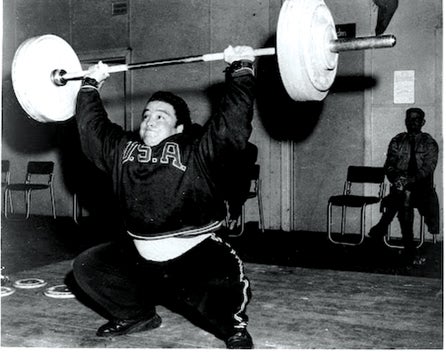Brains and Brawn… Paul Anderson’s Night at the Olympics: Part I
Published 1:22 pm Friday, April 9, 2021
|
Getting your Trinity Audio player ready...
|
BY ALEX CAMPBELL
After his smashing defeat of the Russians in Moscow in 1955 where he earned his nickname as the “Chudo Prirody” (the freak of nature), Paul Anderson was ready to conquer the biggest stage in sport.
In 1956, the Olympics were held in Melbourne, Australia, and this was the perfect place to put Anderson’s power on display to win a coveted Olympic gold medal.
Now that he had supplanted Robert Schmansky as America’s greatest heavyweight lifter, easily toppled his Russian counterparts, and hoisted world record poundage, standing atop the Olympic podium seemed a foregone conclusion.
Paul had been training harder than ever, and he now tipped the scales at well over 350 pounds, his neck size was 24 inches, his biceps were over 24 inches, his chest 58 inches, and his thighs were 36 inches.
He was in the best condition and form of his life. The modern Olympics is about a 3 week-long event, so Anderson and the American contingent arrived 18 days before the lifting competition began.
However, shortly after arrival, something terrible would be unleashed.
Maybe no man could stop Anderson from claiming his rightful place as the strongest man on earth, but possibly a pathogen could.
Not long after arriving in Australia, Anderson began to feel a little feverish. He thought it might have been the new climate or something he ate.
However, less than two weeks before his competition began, he woke in the middle of the night sweating profusely and burning with fever. The following morning, Paul reported his condition to team doctors who began treatment. Surely this would pass in a few days.
The fever persisted and Anderson soon developed nausea, weakness, and muscle fatigue. The doctors were at a loss for what was causing the condition.
In the next week, he lost thirty pounds and was so weak he could barely walk. The doctors began discussing sending Paul back to the states for further evaluation as they were bewildered.
Of course, sending a passenger on a tightly confined plane with hundreds of others with an undiagnosed but most likely high contagious disease was also not an attractive option.
As his competition approached, the doctors told Anderson they could not in good conscience allow him to compete, and it was not like Paul even felt that he could.
Anderson pleaded with the doctors to wait until the day of his competition to make their final determination in hopes that his body could finally vanquish the disease.
Paul went back to his room and devised an aspirin regimen to help. Since he was twice as large as the normal man, he took twice the dose totaling four aspirin tablets every three hours for three days.
Paul knew that aspirin did not cure or treat diseases but only relieved the symptoms, and that is just what he wanted.
The morning of his competition, November 25, 1956, his plan worked, and his fever was down.
The doctors didn’t feel good about Paul lifting as he was obviously not in top shape, but with his fever barely above normal and Anderson claiming he felt fine, they had to make a difficult decision.
The doctors gave their medical opinion that he was not fit to lift, however, they agreed that if he would take responsibility for the decision and agree they had cautioned him against it, they would not prevent him from lifting.
The experts agreed he was the strongest man in the world, now he would have the chance to prove it if he could only feel good enough for a few more hours.
Not only did Anderson have to conquer the disease which ravaged his enormous body, but he would have to contend with another formidable heavyweight.
Just as Paul was redefining the body structure and physical limits of Olympic heavyweights in North America, Humberto Salvetti was doing the same thing in South America.
Salvetti, of Argentina, was one of the new breeds of Olympic lifter which was shorter than 6 feet (measuring 5’11’’) and weighing over 300 pounds (309 pounds at his prime).
With Anderson’s dramatic weight loss, something happened at this meet which never happened at another competition in Paul’s career…he weighed less than a competitor.
Not only was Salvetti big, but he was powerful.
The Argentinian behemoth eclipsed the world record in the press in 1951. For the first time, Paul would not only be faced with a man larger than himself but also with history-making pressing power.
Anderson soon came to realize that in his weakened state and against this man, winning this Olympics would take a miracle.






